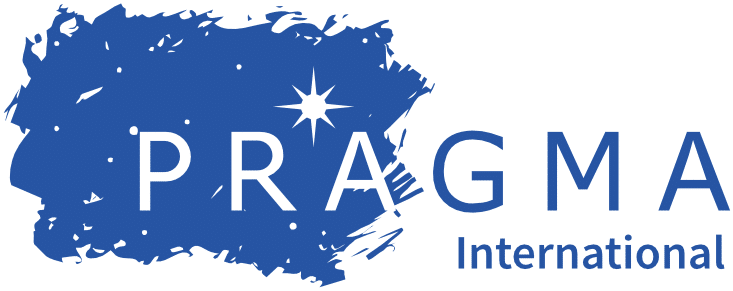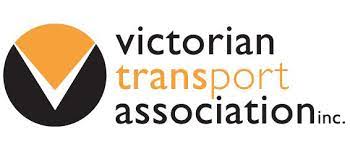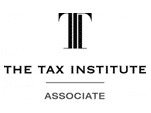The ‘Banking Executive Accountability Regime’ has applied in the banking sector since 1 July 2018.[1] However, it is intended to be replaced by the Financial Accountability Regime (FAR) and then extended to a range of financial entities including trustees of APRA-regulated superannuation funds.[2] Many financial services lawyers may already be familiar with the proposals, but this article is intended for those who need a ‘101’ basic introduction to what is proposed, with a particular focus on the superannuation industry.
The FAR aims to establish a strengthened accountability framework for financial entities.[3] It has not yet been enacted. The Bill was introduced into Parliament on 28 October 2021 and then lapsed upon the proroguing of Parliament when the May federal election was called. However, it is expected to be reintroduced in the new Parliament and receive bipartisan support given that an earlier Senate committee recommended that the Bill be passed.[4]
On the current drafting of the lapsed Bill, the FAR will commence for the superannuation industry 18 months after the Bill receives Royal Assent.[5] Therefore, it is expected to commence sometime in early 2024.
Key concepts: accountable entities and accountable persons
There are two key concepts upon which the regime hinges: accountable entities and accountable persons.
‘Accountable entity’ is defined to include superannuation trustees as RSE licensees.[6]
‘Accountable person’ has a somewhat complex definition and is defined to include persons who hold a position in an accountable entity that gives them actual or effective senior executive responsibility for management or control (or management or control of a significant or substantial part or aspect of the operations) of the accountable entity.[7]
In practice, this is likely to include:
- directors;
- senior managers with sufficient control or responsibility; and
- particular positions prescribed by the Minister[8], which will likely include senior executives for: finance; breach reporting; risk management; member administration; anti-money laundering; investment; end-to-end product responsibility; financial advice; remediation; and insurance.
Lest the regime be too straightforward, it will be regulated by both APRA and ASIC. They will develop ‘joint regulatory guidance to guide and assist accountable entities in the implementation and registration processes.’[9]
The regulators will keep a register of accountable persons. They will determine the extent to which this register is publicly available.[10] The Explanatory Memorandum states that this will allow the regulators to ‘balance the need for confidentiality of sensitive information about financial services businesses with the need for public accountability and transparency.’[11]
Significant related entity (SRE)
When viewed on a single entity basis, one can quite neatly envisage the entity itself being regulated as an accountable entity and its accountable persons being captured also. Of course, corporate arrangements are frequently complex, and it is important to note the concept within the Bill of a ‘significant related entity’ (SRE) and to understand what this means for an accountable entity. It is important because accountable entities are required to take reasonable steps to ensure that their SREs comply with a range of obligations.[12]
In most sectors (excluding superannuation), an SRE will be an accountable entity’s subsidiaries where the subsidiary’s business or activities could have a ‘material and substantial’ effect on the accountable entity.[13] However, it is a broader definition for RSE licensees. In this case, instead of the first limb being that the SRE is a subsidiary, the test is that it be a ‘connected entity’.[14]
Therefore, the definition of SRE in the superannuation context is that an entity (that is not itself an accountable entity) will be an SRE of the trustee where:
- the entity is a ‘connected entity’ of the trustee (and ‘connected entity’ is defined in such a way that it ultimately has the meaning of ‘associated entity’ in s 50AAA of the Corporations Act 2001 (Cth)[15]); and
- the entity’s business or activities could have a ‘material and substantial’ effect on the accountable entity.[16]
There are some factors specified for determining whether an entity may have a ‘material and substantial’ effect on the trustee, but they are quite general. These include the nature and scale of the entity’s business or activities, the nature and extent of any interdependency between the entity and the trustee and any organisational, financial or administrative arrangements between the entity and the trustee.
Some challenges may arise for trustees in trying to determine which of their associated entities are SREs. In addition, the possibility should be acknowledged that a parent company of a trustee could be the trustee’s SRE, but without the trustee having any control over the SRE. In other words, the ‘connected entity’ concept within the SRE definition is so broad for superannuation trustees that they may be expected to ensure that other entities over whom they have no control comply with certain FAR obligations.
Obligations on accountable persons
Having outlined the key concepts of accountable entities, accountable persons, and significant related entities, the next aspect to understand concerns the various substantive obligations which apply.
First, in relation to the obligations that will apply to accountable persons, each accountable person must conduct the responsibilities of their position as an accountable person:
- by acting with honesty and integrity, and with due skill, care and diligence;
- by dealing with the regulators in an open, constructive and cooperative way;
- by taking reasonable steps in conducting those responsibilities to prevent matters from arising that would (or would be likely to) adversely affect the prudential standing or prudential reputation of the accountable entity; and
- by taking reasonable steps in conducting those responsibilities to ensure that the accountable entity complies with specified laws.[17]
Whilst a failure to comply will not lead to civil penalties for the individual, a failure to comply may give rise to a reduction in variable remuneration and/or disqualification by the regulators.[18]
Obligations on accountable entities
Secondly, there are numerous substantive obligations applying to accountable entities, grouped into four broad sets of obligations. A failure to comply with these obligations may give rise to civil penalties.[19]
Accountability obligations
Similar to those outlined above and applying to accountable persons, an accountable entity must take reasonable steps to:
- conduct its business with honesty and integrity, and with due skill, care and diligence;
- deal with the regulators in an open, constructive and cooperative way;
- in conducting its business, prevent matters from arising that would (or would be likely to) adversely affect the accountable entity’s prudential standing or prudential reputation;
- ensure that each of its accountable persons meets their accountability obligations; and
- ensure that each of its SREs complies with requirements (1) to (4).[20]
Key personnel obligations
The accountable entity must also:
- ensure that the responsibilities of the accountable persons of the accountable entity and its SREs cover all parts or aspects of the operations of the accountable entity’s relevant group;[21]
- ensure no accountable person of the accountable entity or any of its SREs is prohibited from being an accountable person;
- comply with any directions the regulators give to the accountable entity to reallocate responsibilities; and
- take reasonable steps to ensure that each of the accountable entity’s SREs complies with paragraphs (2) and (3) as if the SRE were an accountable entity.[22]
Deferred remuneration obligations
A range of obligations apply if the accountable entity remunerates any of its accountable persons in a way which includes variable components. The accountable entity must:
- ensure that, in relation to the variable remuneration of an accountable person of the accountable entity, the payment of 40% of that variable remuneration is deferred for at least 4 years;
- have a remuneration policy in force that requires that, if the person has failed to comply with their accountability obligations, the person’s variable remuneration is to be reduced by an amount that is proportionate to the failure;
- ensure that, if the remuneration policy requires the variable remuneration to be reduced because of that failure, the amount of the reduction is not paid to the person; and
- take reasonable steps to ensure that, if variable remuneration may become payable to an accountable person of a SRE of the accountable entity, the SRE complies with paragraphs (1), (2) and (3) as if the significant related entity were an accountable entity.[23]
Notification obligations
To assist with the regulation of the regime, there are various notification obligations which apply requiring the accountable entity to notify the regulators of particular events, including:
- a person ceasing to be an accountable person;
- the dismissal or suspension of an accountable person because the person has failed to comply with their accountability obligations;
- the reduction of the variable remuneration of an accountable person because of such failure;
- the accountable entity reasonably believing that certain obligations have been breached; and
- a material change to information relating to an accountable person or entity that is contained on the regulators’ register of accountable persons.[24]
In addition, the accountable entity must take reasonable steps to ensure that each of its SREs complies with these notification requirements as if the SRE were an accountable entity.[25]
Additional requirements if the accountable entity meets the enhanced notification threshold
A higher level of compliance will be required for superannuation funds with funds under management which exceed a specified threshold (likely to be $10 billion).[26] Entities subject to the higher level of compliance must:
- provide an accountability statement for each accountable person and give an accountability map;
- inform the regulators of changes to those documents; and
- take reasonable steps to ensure that each of its SREs complies with these requirements also.[27]
An accountability statement is a comprehensive statement of the responsibilities of the accountable person, including the operations for which the accountable person has actual or effective responsibility for management or control and other matters prescribed by the regulators.[28]
An accountability map contains the names, reporting lines and lines of responsibility of all the accountable persons of the accountable entity. [29]
Conclusion
The superannuation industry should anticipate the passing of the FAR legislation later this year and, in the meantime, trustees and executives would be well advised to commence their planning work. Determining which associated entities meet the definition of a ‘significant related entity’ will be a key initial task for some super funds.
This article was first published in the Australian Superannuation Law Bulletin (Volume 33, Nos 7 & 8), July 2022.
[1] Banking Act 1959 (Cth) pt IIAA.
[2] See for example the Explanatory Memorandum, Financial Accountability Regime Bill 2021 (Cth) 1.57 and 1.9.
[3] Financial Accountability Regime Bill 2021 (Cth) s3.
[4] Senate Standing Committee on Economics, Parliament of Australia, Financial Accountability Regime Bill 2021 [Provisions] (Report, February 2022).
[5] Financial Accountability Regime Bill 2021 (Cth) s9(4).
[6] Ibid s9(3).
[7] Ibid s10.
[8] Treasury has provided an indicative list in Financial Accountability Regime – List of prescribed responsibilities and positions (Policy Proposal Paper, 16 July 2021): at 6–9.
[9] Treasury, Joint Administration of the Financial Accountability Regime between APRA and ASIC (Information Paper, 16 July 2021) 4.
[10] Ibid s40(5).
[11] Explanatory Memorandum, Financial Accountability Regime Bill 2021 (Cth) 1.153.
[12] See for example ss20(e), 23(1)(d) and 25(1)(d) of the Financial Accountability Regime Bill 2021 (Cth).
[13] Ibid s12(1).
[14] Ibid s12(3).
[15] Ibid s8, and section 10(1) of the Superannuation Industry (Supervision) Act 1993 (Cth).
[16] Ibid s12(3).
[17] Ibid s21.
[18] Ibid ss25(1)(b) and 42.
[19] Ibid s80.
[20] Ibid s20.
[21] ‘Relevant group’ is defined in s8 in relation to an accountable entity to mean ‘the accountable entity and its significant related entities’.
[22] Ibid s23.
[23] Ibid s25.
[24] Ibid s31(1)(a).
[25] Ibid s31(1)(b).
[26] The ‘enhanced notification threshold’ will be set by ‘Minister rules’ – see s31(3).
[27] Ibid s31(2).
[28] Ibid s33.
[29] Ibid s34.








